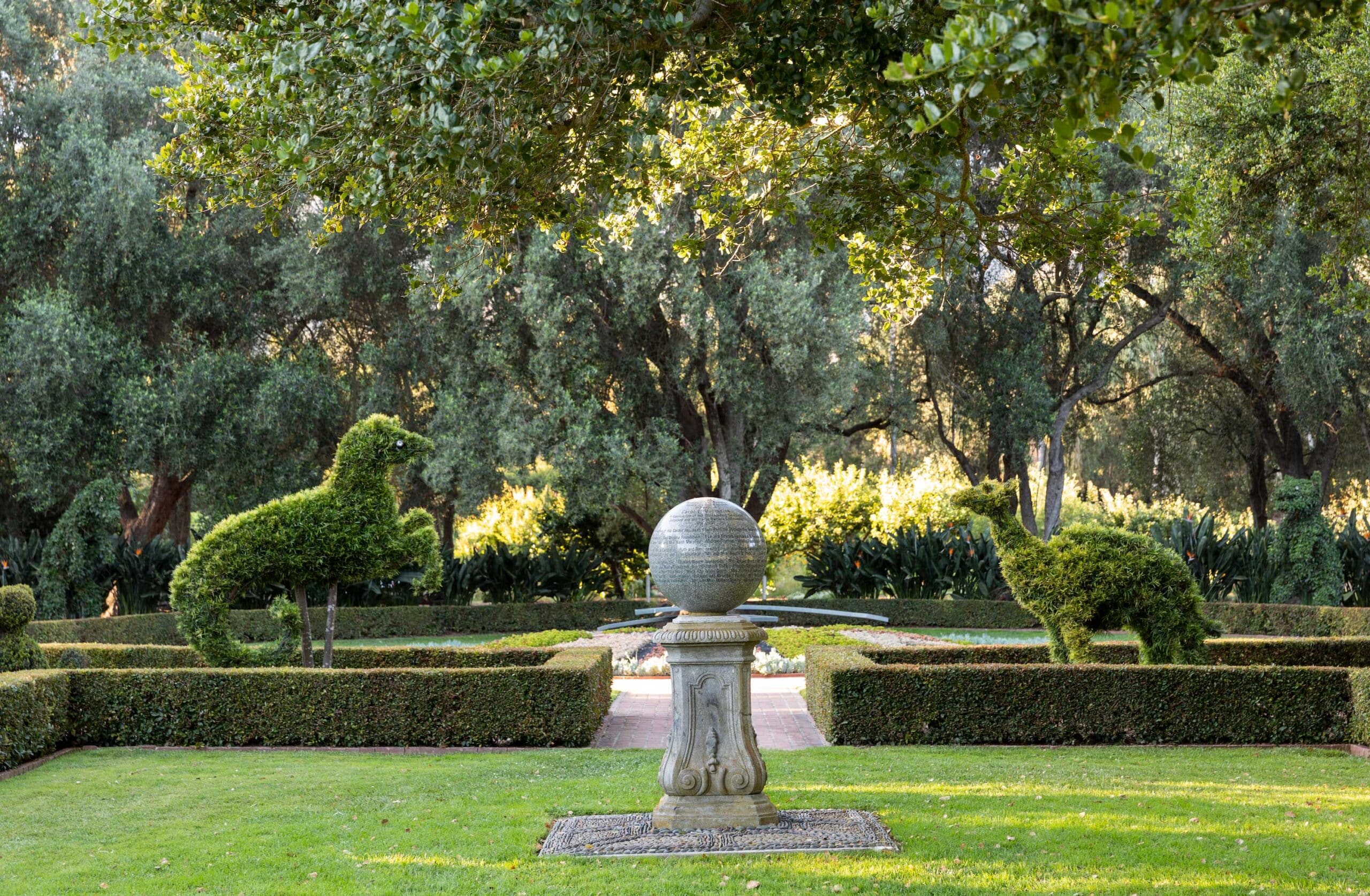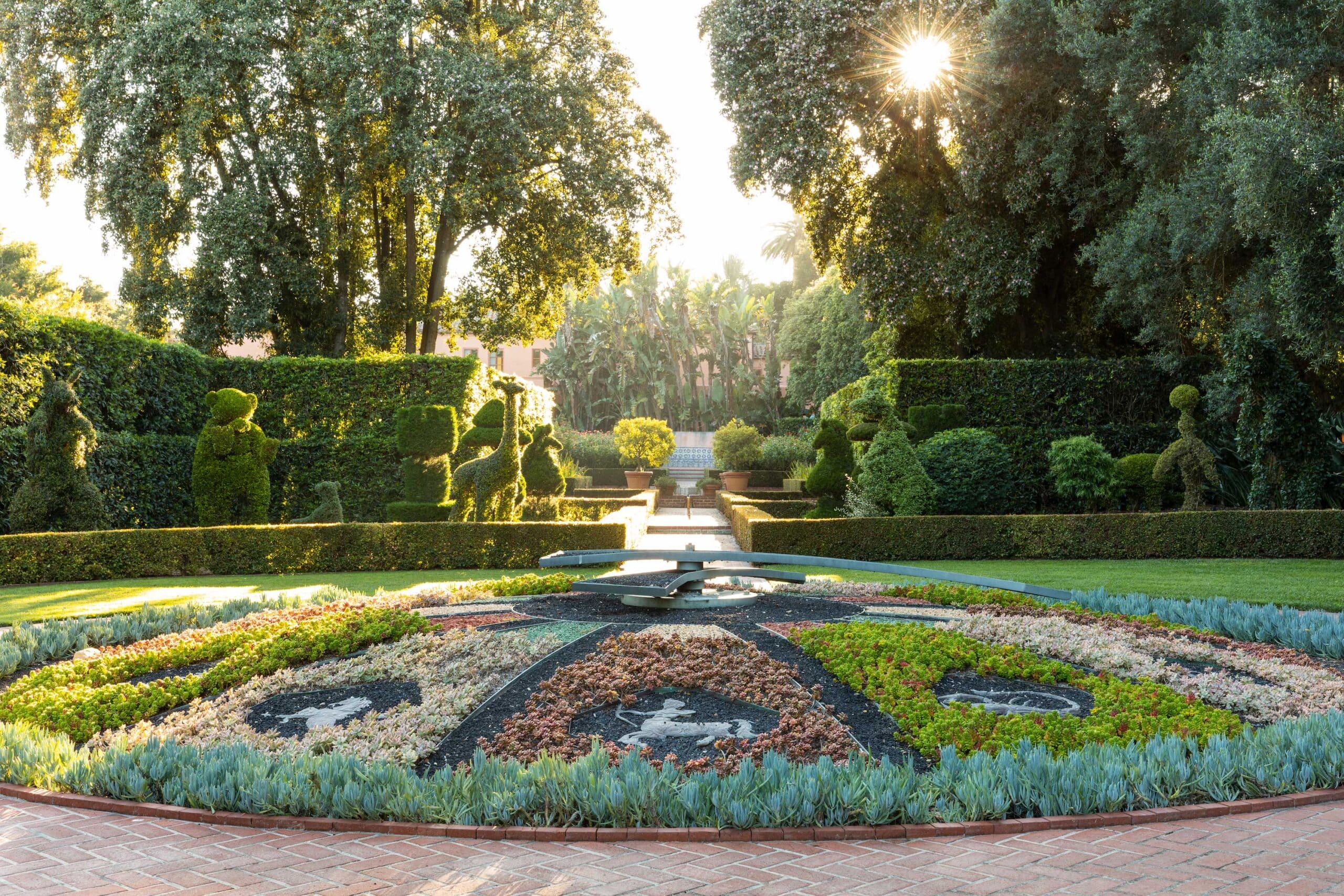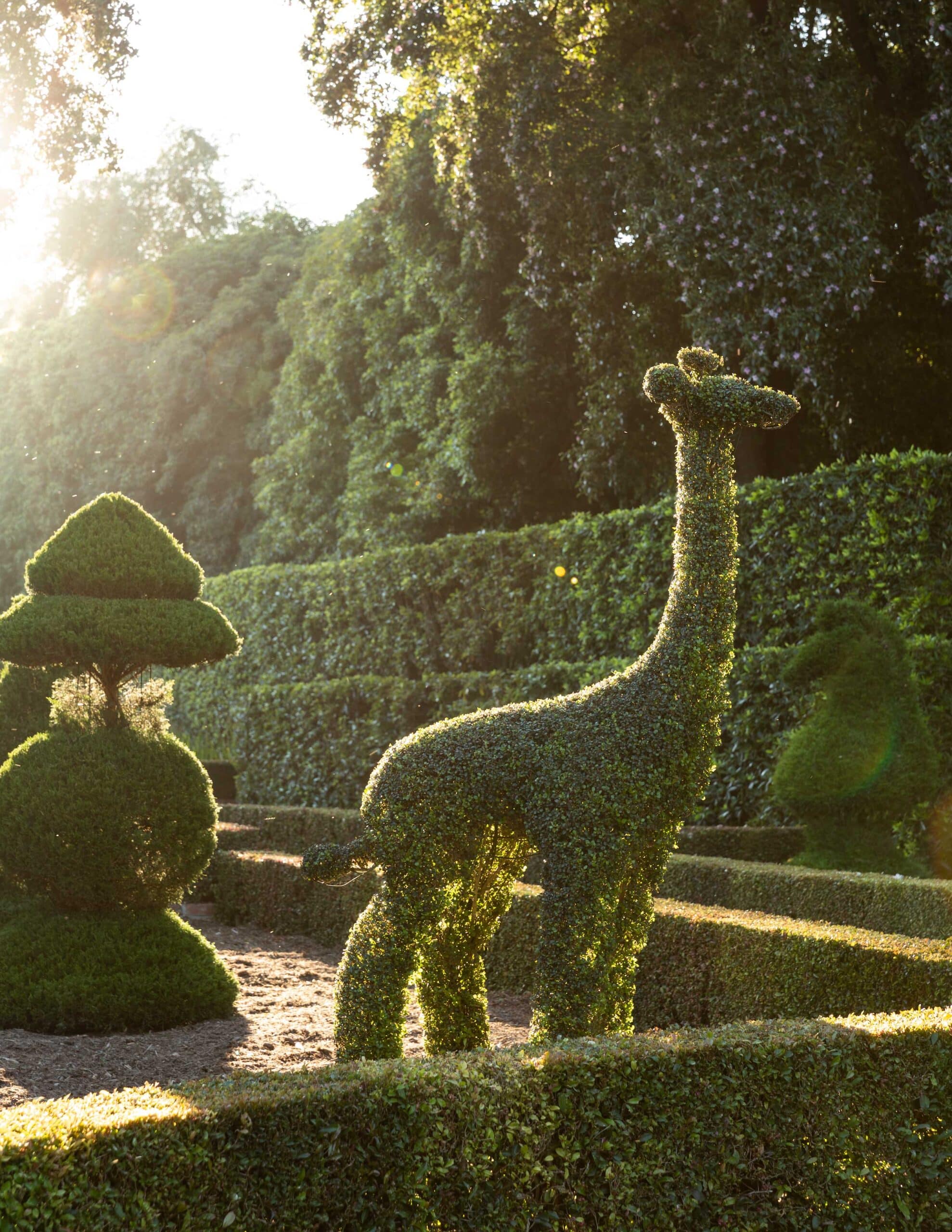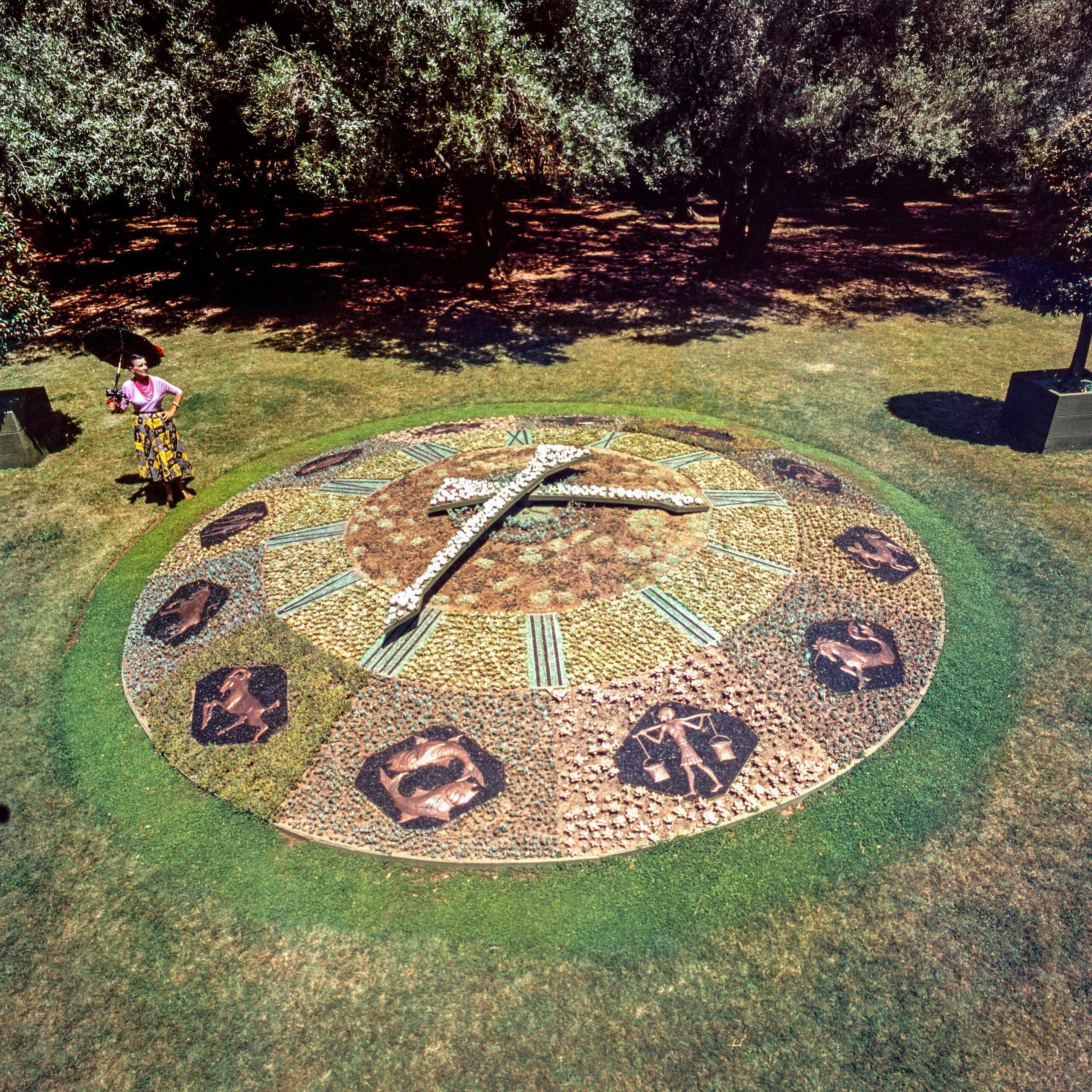The public tour season for 2024 is now closed. The Garden re-opens for public tours on February 12. We look forward to welcoming you in 2025.
Topiary Garden
Madame Walska referred to the topiaries as her "horticultural zoo"
Topiary Garden
Lotusland’s beloved Topiary Garden is located behind the Main House and connects with the Parterre. Madame Walska referred to the topiaries as her “horticultural zoo.” Currently, there are 26 topiary figures including a giraffe, a series of chess pieces, a gorilla, and the iconic peacock, all encircling Lotusland’s Horticultural Clock.
the
Noteworthy
Features
Horticultural Clock
Lotusland’s Horticultural Clock was designed by Ralph Stevens and installed in 1955. The working clock was custom made by AdVance Time in St. Louis, Missouri. Copper zodiac signs were crafted by Gunnar Thielst, who closed his own ornamental ironwork studio to work with Madame Walska on many garden projects for more than 25 years.
Garden Redesign and Endowment
Many of the topiary figures that had delighted children since the 1960s were beyond restoration by the time Lotusland opened to the public in 1993. In 2000, volunteer leaders raised funds to restore the garden. Landscape Designer Lori Ann David redesigned the Topiary Garden, replicating many of the original horticultural animals and adding a collection of new figures. The garden was endowed in 2013 by an anonymous donor in honor of founding Trustee, Carol Valentine.
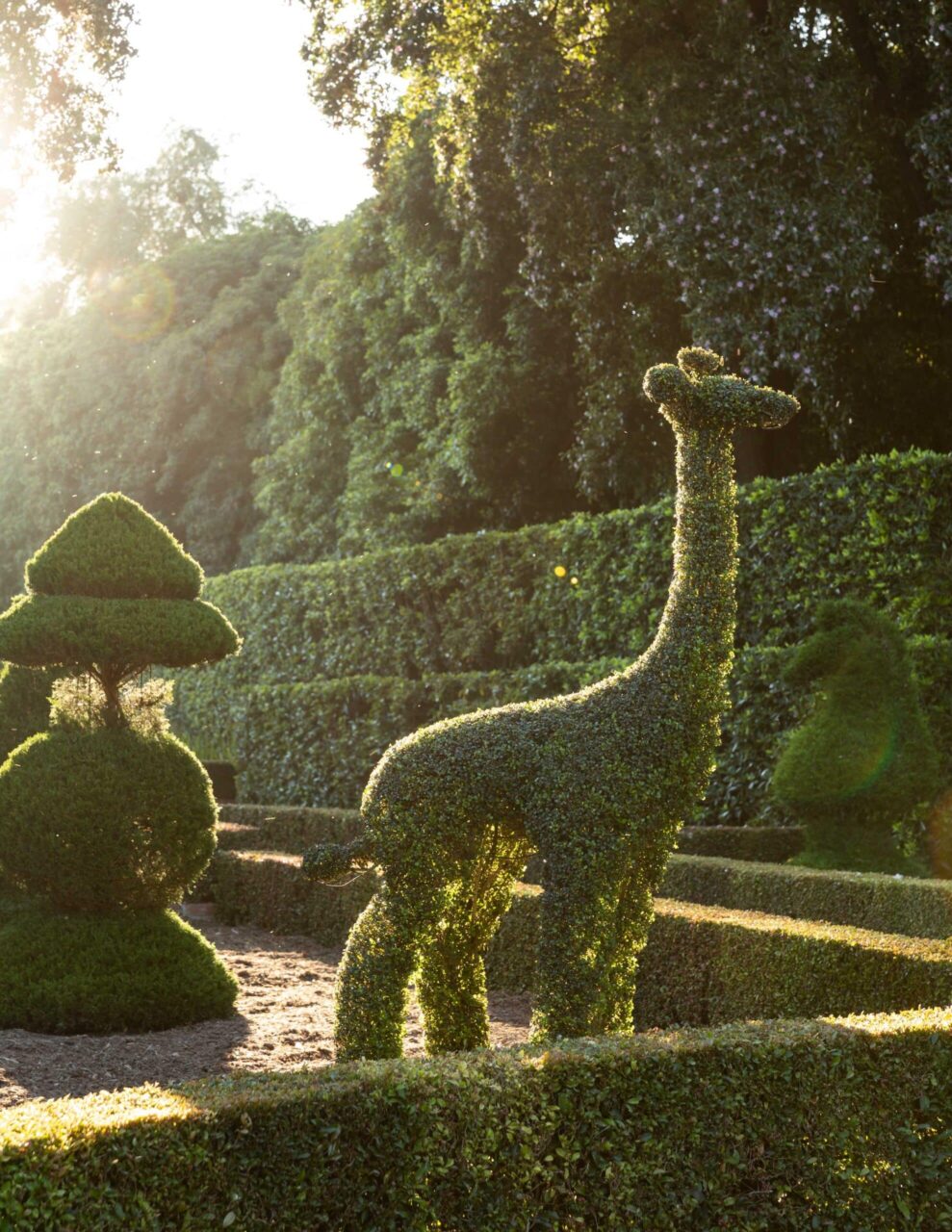
Peacock Topiary
Lori Ann David drew on her creative imagination to enliven the topiary creatures with innovative plant combinations, such as the blue-flowering Hardenbergia ‘Happy Wanderer’ used for the peacock’s tail.
Bird of Paradise (Strelitzia reginae)
Some plants naturally resemble animals. The bird of paradise is so called because the shape of its flower looks like a tropical bird in flight. Look for a long, modified blue petal containing pollen that juts out at 45 degrees to the others. This serves as a perch for birds to land as they retrieve nectar from the base of the flower, unwittingly getting pollen on their feet and chests to carry with them.
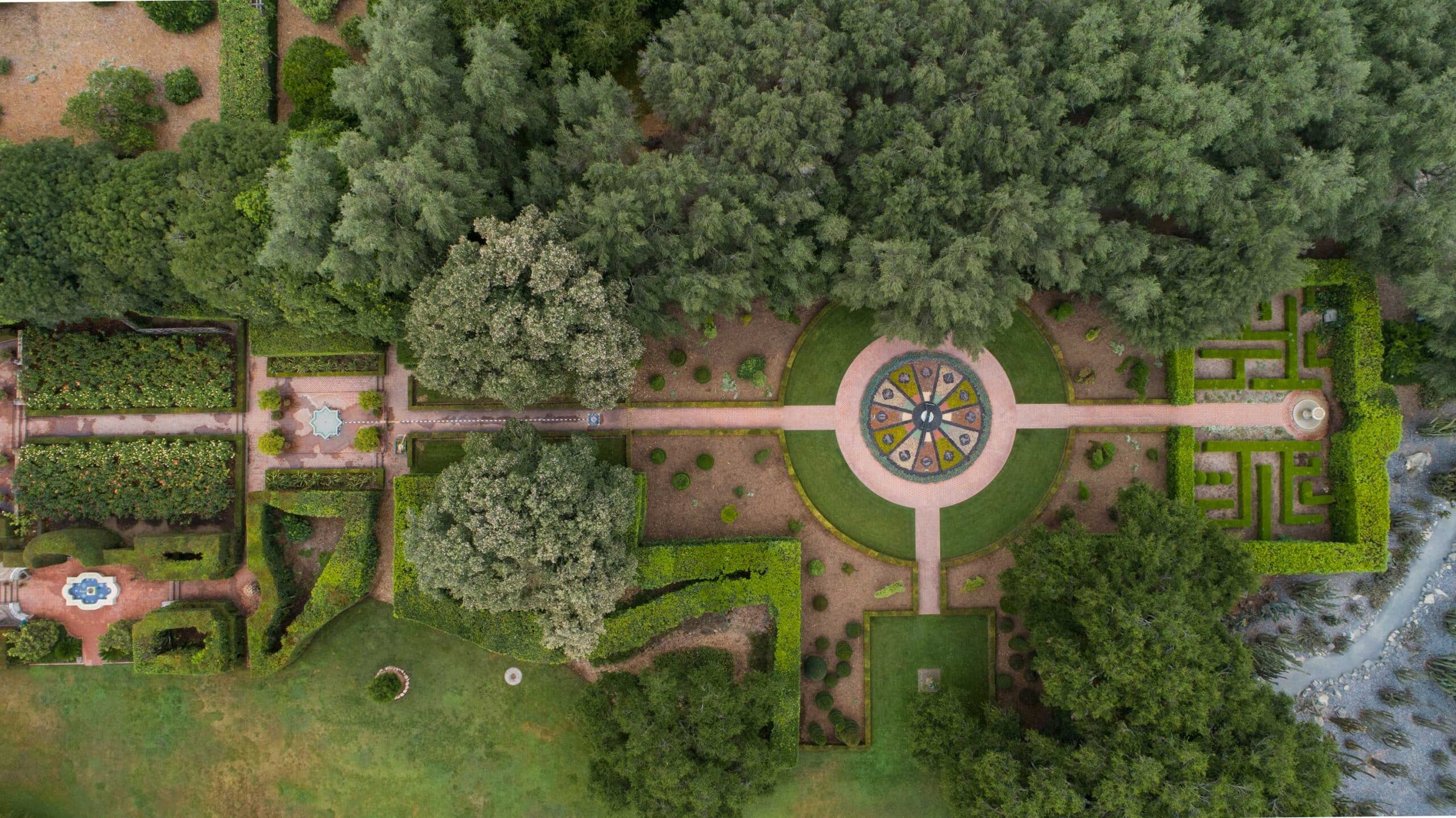
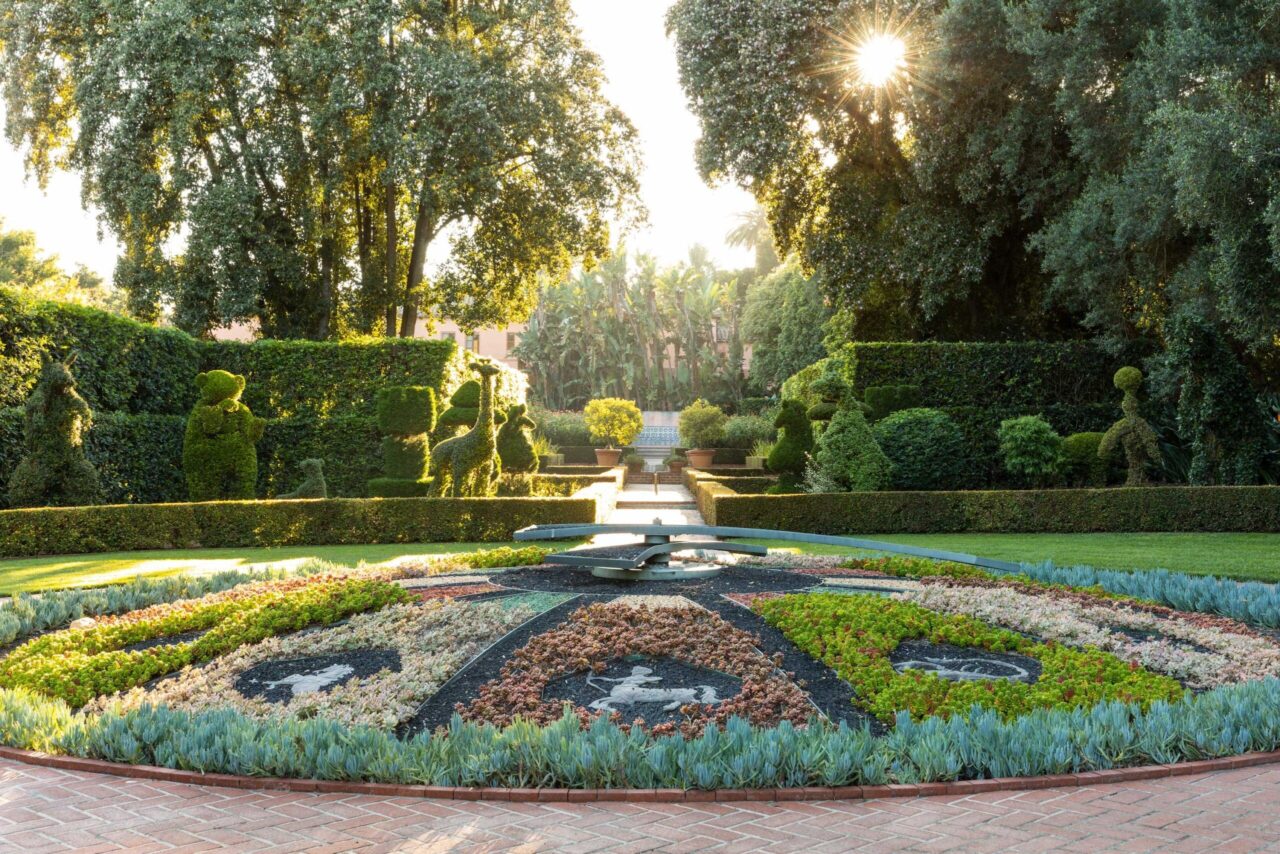

Notable Species
Afrocarpus gracilior – hippocampus, camel, lion’s mane; Akebia quinata – peacock feathers; Loropetalum chinense v. rubrum ‘Monraz’ Razzleberri® – hummingbird; Juniperus chinensis ‘Mint Julep’ – chess pieces; Ligustrum japonicum – brontosaurus, horse, and pig; Buxus microphylla ‘Winter Gem’– maze and fish
Several different Syzygium taxa are represented. Includes: Syzygium paniculatum – surrounding low hedge; and several cultivars: ‘Globulus’ – fish; ‘Monterey Bay’ – parrot body, cones, pyramids, spheres; and ‘Teenie Genie’ – rabbits
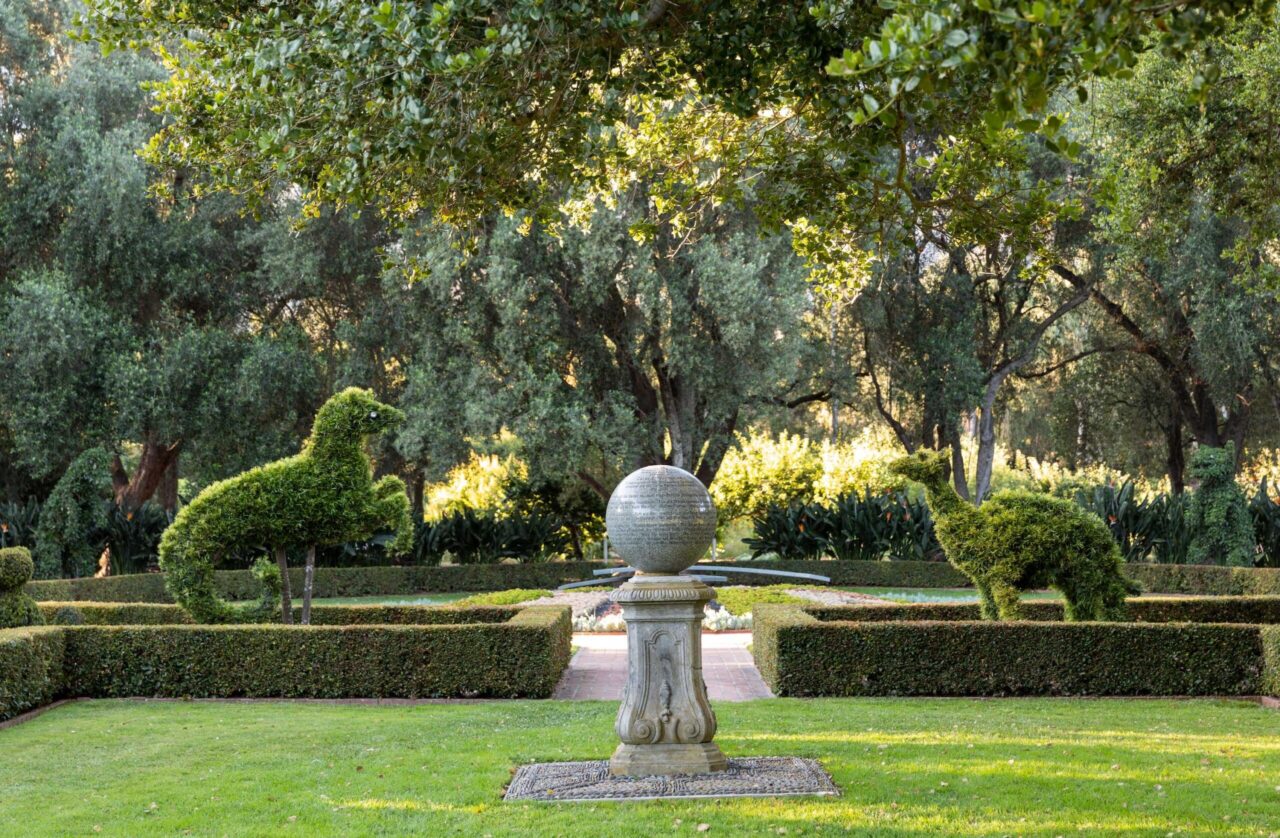
DESIGN INSPIRATION
Topiary Origins
Topiaries are believed to have originated in ancient Rome and came into favor throughout the gardens of Europe, and once again during the large estate building period in the 20th century in the United States. To make topiaries, select species that have small leaves, thick foliage, and are evergreen. Boxwood, such as Buxus sempervirens, and African fern pine (Afrocarpus gracilior) are wonderful options.


